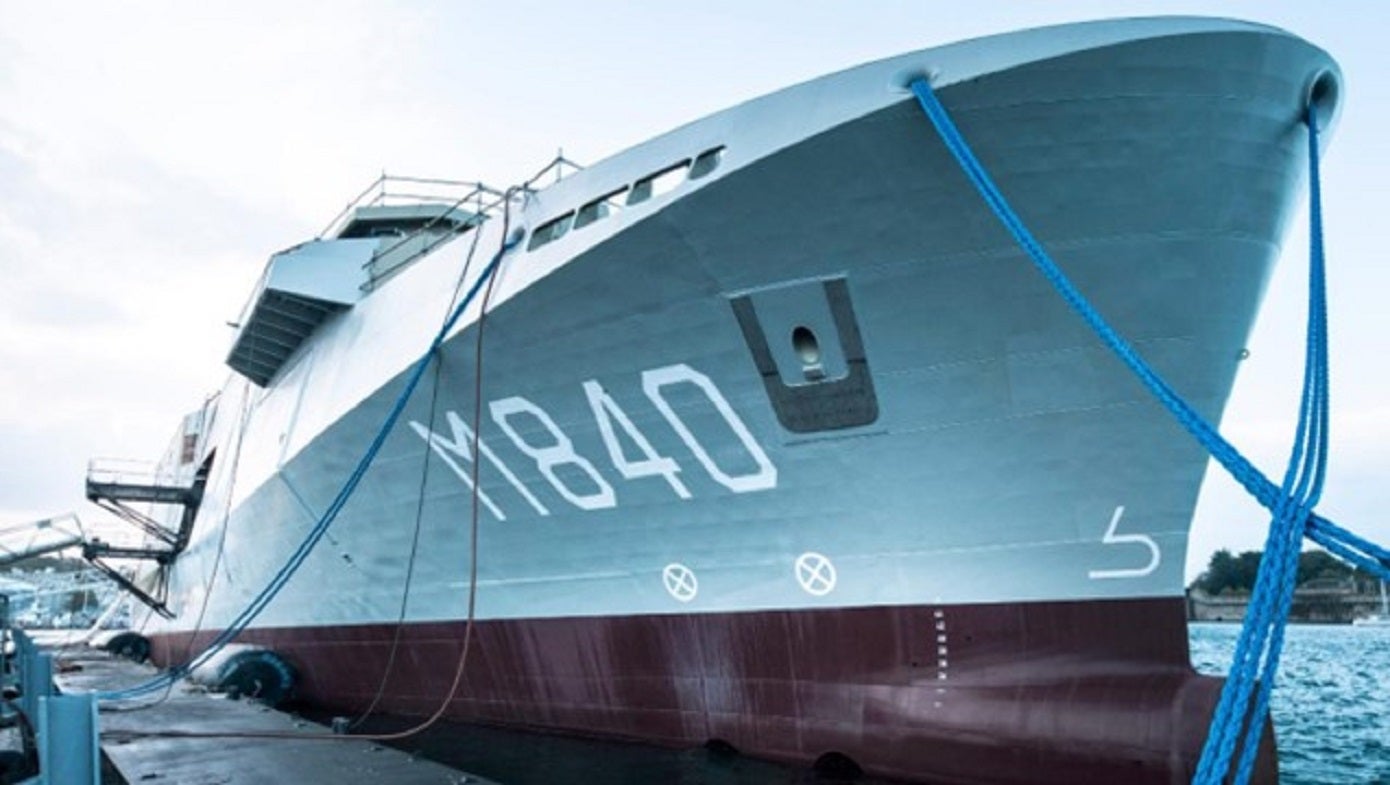
Kership, a Naval Group-Piriou joint enterprise, launched the second of 12 Belgian-Dutch mine counter-measure vessels (MCMVs), the Vlissengen, due to be delivered to the Royal Netherlands Navy in 2025.
In May 2019, the Belgium Naval & Robotics Consortium selected France’s leading shipbuilder, Naval Group, as the prime contractor for the rMCM programme to induct six new MCMVs for each of the two navies to replace the legacy Alkmaar-class (the Belgian designation is the Tripartite-class) minehunters, which entered service more than 30 years ago.
As the chief architect of the programme, Naval Group focuses on the design of the class as well as the integration and testing of the mission systems. Meanwhile, Kership is responsible for the production of the 12 vessels assembled at Concarneau and Lanester.
Currently, the first vessel, Oostende, intended for the Belgian Navy, was launched in March 2023 and is due to be delivered in 2024. The keels for the third vessel, Tournai, another Belgian MCMV, as well as the fourth ship, Scheveningen, a Dutch vessel, were also laid this year.
What does the Alkmaar-class have to offer European defence?
The class is suitable for a range of missions, including identification and destruction of naval mines, anti-piracy, anti-terrorism, maritime traffic interception, as well as territorial waters surveillance.
The new generation of MCMVs will have an overall length of 81.4m, a beam of 17m, and a displacement of 2,800t. The vessel will be integrated with a launch and recovery system for the on-board Inspector 125 unmanned surface vehicles (USVs).
How well do you really know your competitors?
Access the most comprehensive Company Profiles on the market, powered by GlobalData. Save hours of research. Gain competitive edge.

Thank you!
Your download email will arrive shortly
Not ready to buy yet? Download a free sample
We are confident about the unique quality of our Company Profiles. However, we want you to make the most beneficial decision for your business, so we offer a free sample that you can download by submitting the below form
By GlobalDataThe ships can carry up to 100 drones that will be managed in a pool called ‘Toolbox’, which can be configured based on the mission-specific requirements. Toolbox comprises surface and underwater drones such as the USV Inspector 125 and A18M autonomous underwater vehicles (AUVs) respectively and T18-M towed sonars for mine detection.
Cyber-secured by design, these MCMVs are the first to have the capability to embark and launch a combination of surface drones, underwater drones and aerial drones.
The MCMVs will use a mainly autonomous system for detection, classification and neutralisation of mines. Naval Group designed the ships to withstand underwater explosions and a very low acoustic, electrical and magnetic signatures, in line with the missions to be carried out.







